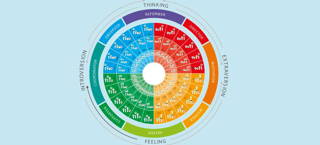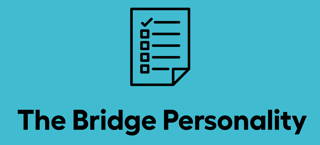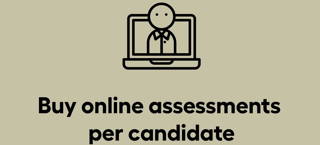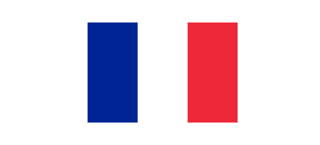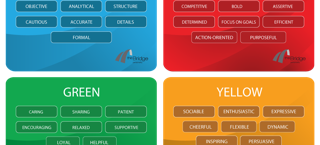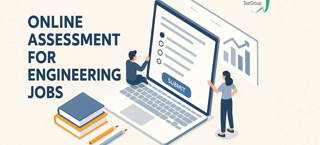Ten free tips for completing a personality test
Products
Saturday 18 October 2025Ten free tips for completing a personality test
A personality test is a psychological questionnaire designed to assess the personality of a person. Companies not only look for candidates with the right background, but also with the right personality. That is why many companies will ask you to complete a personality test during the application process. Some people find this intimidating, but there is no need. You cannot make mistakes — just try to be as honest as possible.
What is a personality test?
A personality test often forms part of an online assessment. In many cases the questionnaire is taken digitally because time does not matter and cheating makes little sense. The aim of a personality test is to gain insight into your personality. Thus a personality test is also frequently used for personal development. The insight into your personality is obtained by asking you a series of questions. By asking many questions in the test, one can better form a picture of you as a personality. Because of the many questions one tries to prevent socially desirable answers. The consistency of your answers can also be determined better with more questions during the personality test. The large number of questions also makes the analysis of the personality test one of the least scary tests to do. You cannot give right or wrong answers. You can only give honest or less honest answers.
The most used personality theory in a personality test: the Big Five
Personality tests are an interesting way to learn more about who you are and how you are put together. One of the most used methods for this is the “Big Five”. This may sound like an adventurer group or a famous band, but it actually concerns the five main traits that together form our personality. These five are: openness (how curious and creative you are), conscientiousness (how organised and reliable you are), extraversion (how social and energetic you are), agreeableness (how friendly and compassionate you are) and emotional stability (how calm and stress-resistant you are).
By answering questions about how you feel or how you would act in certain situations, a personality test based on the Big Five can give a picture of your unique mix of these traits. The nice thing is that there is no good or bad here; every combination of the Big Five traits makes you who you are. A Big Five personality test is often used by companies and organizations to understand people and to help them in their professional development.
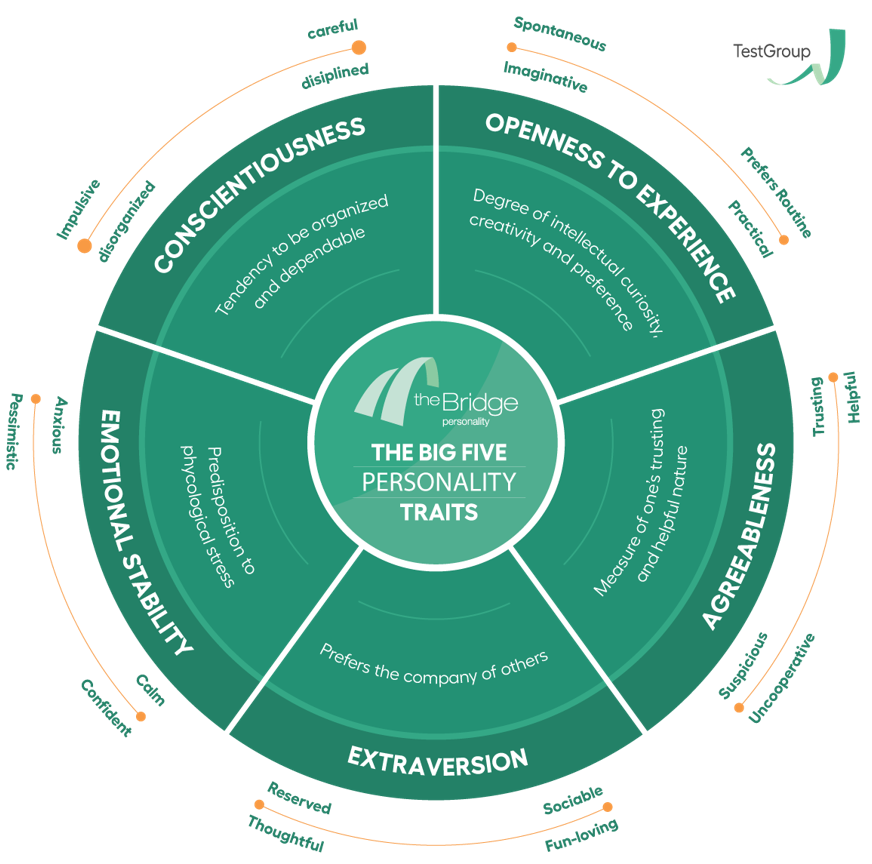
Why do employers use a personality test?
When selecting the right candidate for a role, employers increasingly rely on personality tests. These tests provide insight into how well someone fits within a team, the company culture and the role’s specific demands. Below are some crucial aspects employers check:
Sample report of a personality test
Here is a sample report of a personality test. It first shows the scores on the 34 Big Five traits, which can be related to almost any job profile. Next, the participant’s Jung Type is displayed. Then, the scores on the 4-color model appear in a clear color wheel. On the final page, you can see the scores on eight commonly used competencies.
Example page from a personality test report
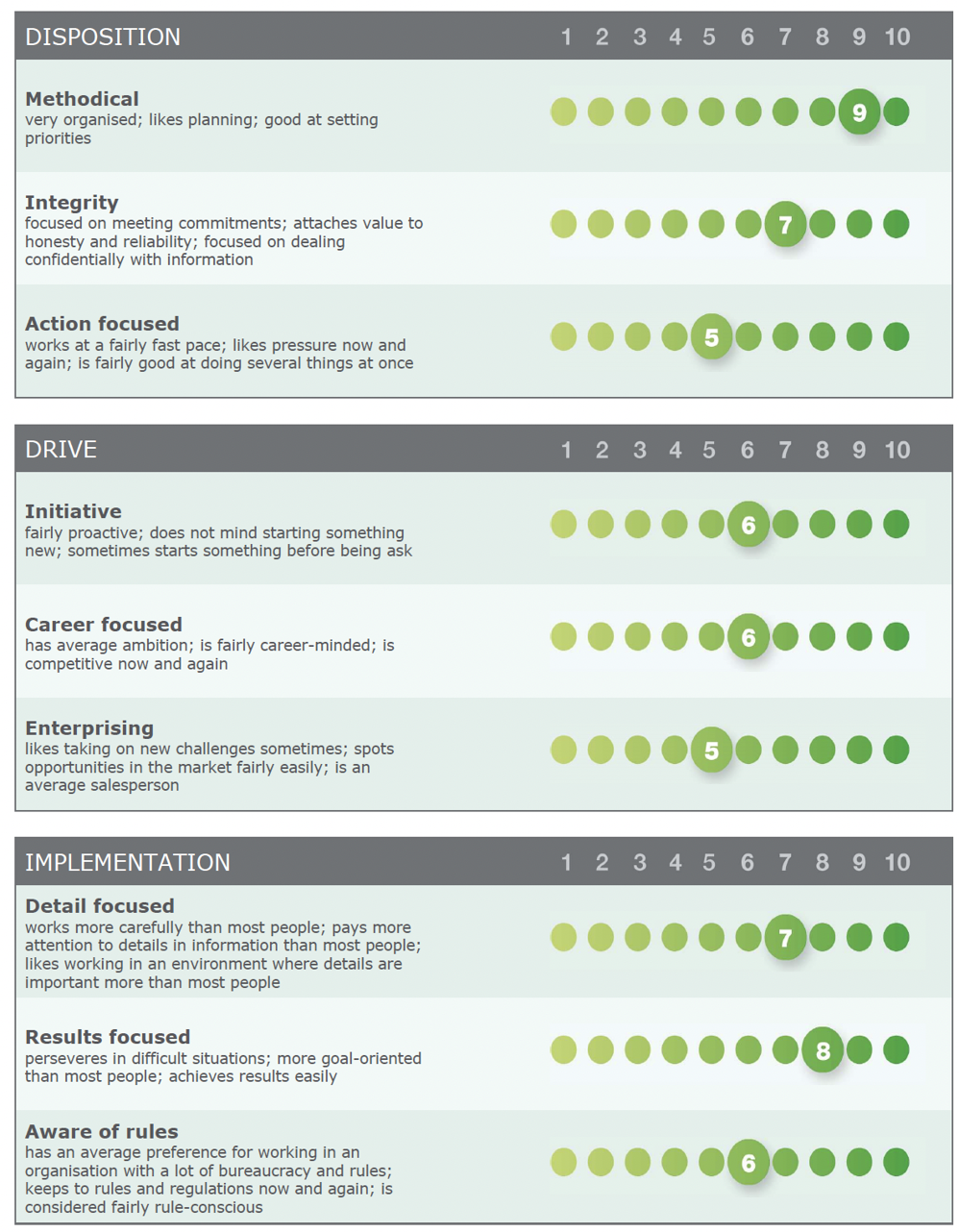
How can you prepare for completing a personality test?
This part of the online assessment is the only component that does not require preparation. The intention of the personality test is to gain insight into your personality. This is relevant to the company, but also to you. After all, you also want to be a good match for the company culture. If you try too hard to prepare for the personality test, you may give answers that align more with the company’s core values than your own. In that case you might appear to be a good match on paper but be less satisfied in the role in practice. In short: besides familiarising yourself with the format and structure of the personality test, you do not need specific preparation. Frequently, a specific personality test is used that matches the role you are applying for, such as a personality test for IT.
The questions (items) in a personality test
Besides the fact that a personality test consists of many questions (also called items), some people find the statements uncomfortable. The statements and responses may lie very close to each other, forcing you to make a choice. There is no opportunity for explanation during the test. During the interpretation of the results there is room for explanation, but when the results of the personality test indicate that you are an introvert person, it may be difficult to change this. Candidates who have taken a personality test often say “you can answer any way” — but this does force you to make choices.
The Big Five model of personality
Most personality tests are based on the five aspects of the Big Five personality model. This is called a Big Five personality test. These five aspects are: (1) extraversion, (2) agreeableness, (3) conscientiousness, (4) neuroticism and (5) intellect/imagination. Most questions in a personality test will relate to these five aspects and your personality will be assessed on them.
How to complete a personality test
One of the most important points when taking a personality test is to be honest about yourself. By answering honestly to the questions, you will obtain a reliable picture of your personality. It is important to realise that this picture may not always align with what a company is looking for. So keep in mind that being yourself is best. Also, because of the large number of questions it can sometimes be difficult to maintain concentration. Make sure you stay sharp and alert during the test. Finally, it is important to remember that everyone has weaker points. Therefore you should be honest about your weaker points and know how you work on improving them.
Ten tips for completing a personality test
More information about the tests of TestGroup
Would you like to know more about using personality tests in your organisation? Contact TestGroup here.
Ordering personality tests
Would you like to order personality tests for your candidates or employees? You can order a test per candidate or choose an assessment subscription on the Bridge Assessment Platform.
Video: The Bridge Personality
Are you looking for a modern personality test that can detect whether your candidate has been honest during completion? A personality test that uses both the Big Five, the 16 Jung Types and the well-known 4-colour model? Welcome to The Bridge Personality, a modern, adaptive personality test that really helps organisations with recruitment, selection and development of staff. Trusted by 10,000+ organisations worldwide.
-
What is a personality test and what is it used for?
-
A personality test is a psychological questionnaire designed to measure your personality. Organisations use these tests, for example, to see whether a candidate fits within a team, the company culture or the job requirements.
-
Are there correct or incorrect answers in a personality test?
-
No, there are no “right” or “wrong” answers. The key is that you are honest: your first instinct is usually the best.
-
Do I need to prepare for a personality test?
-
Not really. Because the test is meant to measure your authentic personality, it is actually undesirable to prepare too much or to adapt your answers in a “steered” way.
-
How does an organisation know if my answers are honest?
-
Advanced personality test systems use techniques that can detect inconsistencies or socially desirable responses. If your answers deviate too much, this may become noticeable.
-
Am I allowed to adjust my answers afterwards?
-
Some tests offer that option, but it is generally not recommended. Your first answer is usually the most spontaneous and reliable.
-
Should I think of private life or work when completing the test?
-
When taking a test in a job application context it is wise to think from the work situation rather than private life. That way you present a picture that better aligns with expectations on the work floor.
-
Can external events (for example stress or problems) affect my answers?
-
Yes, negative experiences or stress can influence your state of mind and thus also your answers. Try not to let that influence you too much while completing the test.v
-
Is concentration important during the test?
-
Absolutely. Make sure you complete the test in a quiet environment and stay alert. Fatigue or distraction can reduce the reliability of your answers.
-
What should I do if I start to doubt or fear I’m making mistakes during the test?
-
Continue in the flow, do not change your answers afterwards and don’t let doubt steer you. Trust your first impression.
-
What is the difference between a personality test and a cognitive ability test?
-
A personality test measures your behavioral and character traits. In capacity tests (such as IQ or intelligence tests), there are correct and incorrect answers, and often a time limit applies.




